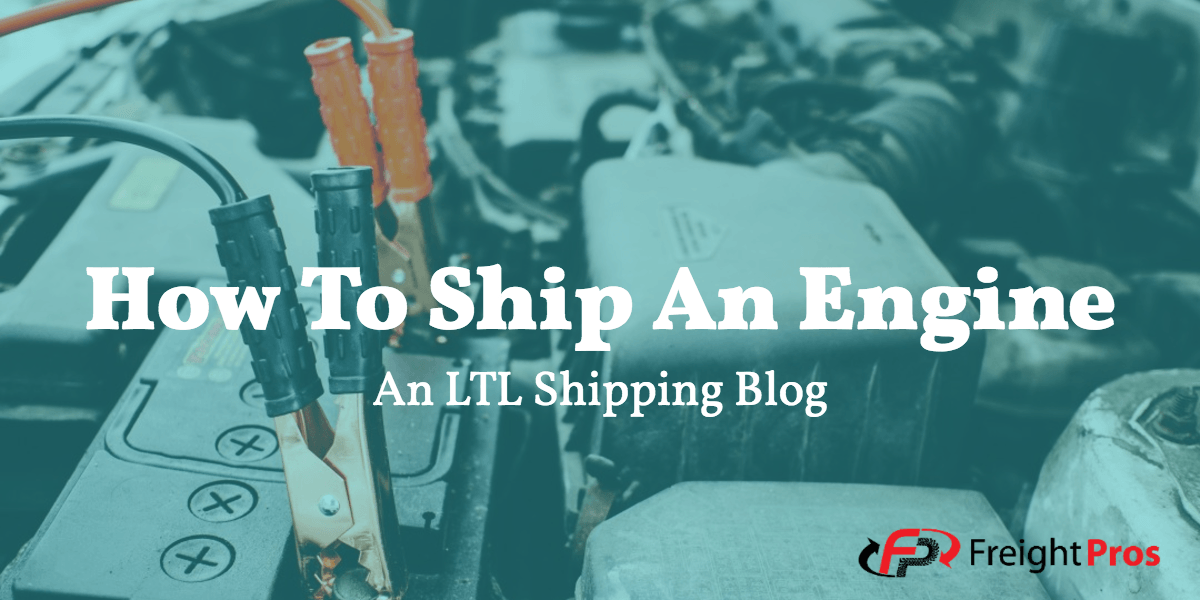Check out our other "How-To" shipping blogs such as How To Ship A Mattress or The Best Way To Ship Coffee for more info on items commonly shipped (like engine shipping)!
Over our years in the industry, we've shipped A LOT of stuff. Weird stuff, heavy stuff, fragile stuff - take your pick. We've even moved stuff using expedited shipping. You know what else we've shipped a lot of? Engines. Today we'll teach you how to ship an engine using standard pallet sizes. When it comes to engine shipping, we're the experts.
The motor vehicle means more to America than perhaps any other country in the world. Since the invention of the automobile, the car has been woven into the fabric of the American culture through advertisements, movies, and even a little bit of Bruce Springsteen.
The romance of the open road? The cherry red mustangs? This country is car-crazy, always has been, and when a country is car-crazy they in turn are also engine-crazy. This is where we come in.
Freight Terms Everyone Should Know
Shipping an engine is one of the most common types of movements that we see. But if you've ever looked at how to ship an engine, you know there are a few guidelines you need to keep in mind to make sure things go smoothly when you tackle your engine shipping.
You can't just use post office shipping on this thing. This is a post about how to ship an engine, so here's a few things to think about the next time you get involved with engine shipping:
Drain All Fluids
Before you do anything, drain all the fluids out of the engine. This is step one in how to ship an engine. This protects not only your engine, but also other freight around it, and carriers will not pick up an engine that still has fluid in it.
A standard LTL shipment gets moved around from truck to truck, terminal to terminal, and with so much handling its important to protect against leaks, so make sure your engine is nice and cleaned out before shipping.
Freight Class 70 or 85
We've explained freight class before, but it's still a tricky part of the LTL shipping industry, and engine shipping is no exception. What makes the classing on an engine unique is that it's determined by the packaging used for the shipment. In the most basic terms, anything in boxes or crates will usually be classed at 70, while any other packaging will be classed at 85.
Keep in mind this is only for automobile engine shipping, so if you're shipping that 747 engine that's been collecting dust in your garage, it's probably best to get with your freight broker and confirm the freight class.
Notate Type & Model on Bill of Lading
Always good to keep in mind when learning how to ship an engine, as with anything else in the shipping industry, more information on the BOL is better. Instead of just notating "engine" on the bill of lading, it's always a good idea to put your type and model for your engine in the description section of the BOL.
This will help protect against a potential reclass or reweigh, especially if you have a commercial or manufacturer invoice.
25 Genius Tips for Saving Money on Your Shipping Costs
So there you have it! That's how to ship an engine. Not so bad right? Now all you need to hope for is that you're in the right shipping zone. This is the first in a series of posts about commonly shipped items so check back later for more tips.
Also, if you want more information about shipping, check out our new freight shipping guide, available for FREE!
